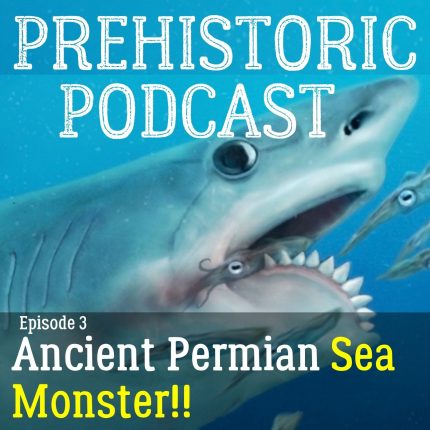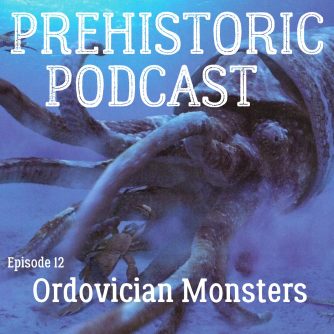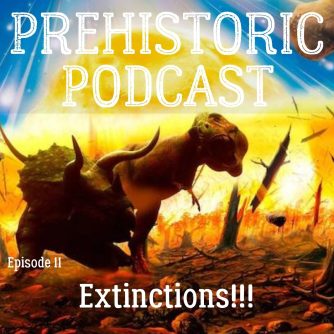Corrections from last episode
Sue the tyranossaur – over 9 tons
Revised 2021 spinosaurs only 7 tons maximum
https://www.quora.com/Is-Spinosaurus-still-the-largest-theropod
Outdated information: https://www.britannica.com/animal/Spinosaurus
Scotty = 9 metric tons
Microraptor Evolutionary Dead end
“This hard evidence of developed flight feathers, combined with the Microraptor’s lack of the specialized shoulder joint needed for flapping flight, seemed to sugest that it was a glider”
“Regardless of how it actually glided, the question remains whether the Microraptor represents an intermediary stage between small arboreal dinosaurs and modern day birds. Many people cite its existence as evidence for the top down theory of the evolution of flight. They cite presence of long flight feathers that are very similar to those of modern birds to identify Microraptor as an ancestor of modern fliers.
While the evidence is good, it is by no means definitive. It is completely posable that some day soon a small running raptor fossil will be discovered with flight feathers. Also the Microraptor may just be a dead end on the evolutionary tree, after all there is no modern bird species with flight feathers on two sets of limbs. Realistically we may never know how flight truly evolved, and for now it still remains unclear whether flapping flight evolved from gliding or running.”
Evolution: Transitional Species actually should be called Transitional Form
I was trying to see if a cassowary was in the family of Oviraptoridae and the answer actually is “Maybe” Some think it’s just a product of Convergent evolution and others think they could be more closely related. The specific Oviraptoridae people point out is the Corythoraptor which basically looks exactly like a cassowary except for having claws/hands
It is quite possible that it just evolved in the same/similar conditions as the corythoraptor so evolution selected the same traits again to be efficient in those conditions.. We often see this happening with many examples of unrelated animals arriving at the same shapes/sizes and lifestyles. In this case it may have evolved from other smaller therapods that created all of the 10k bird species we see today.. But it could possibly also be related to Corythoraptor as well.. It’s not been settled
The cassowary’s order is Struthioniformes which includes ostrich and emus
The most common thought is that flighted birds were best suited to survive the extinction event due to the ability to fly to find food.. And since land bound ecological niches were open and ripe for the picking.. Modern flightless birds evolved to fill those niches such as the terror bird. The most common belief is that all non-avian dinosaurs went extinct.
Currently I am in favor of the consensus on this topic.. That the cassowary is not a descendent of an Corythoraptor but is actually a product of convergence
Questions from last episode
How did Crocodilians survive the cretaceous extinction event when all large dinosaurs died.. What was it about them that allowed them to survive ?
- Dylan pointed out that evolution hasn’t changed the crocs design since ancient times.. Apparently this efficient body shape is a big factor in their survival of extinction
- Crocs can live in our out of water and live in complete darkness.
- They can also survive terrible injuries
When did crocs evolve
“Since then, crocodiles have changed very little, and researchers believe it is their limited diversity and apparent lack of evolution that has been the key to their success.”
“Their slow evolutionary rate is due to arriving at a shape that was versatile and efficient enough to cope with a severe global catastrophe, according to researchers at the University of Bristol.”
“They are extremely tough and robust – and have immune systems that can sustain terrible injuries.
In territorial fights they commonly tear each other’s legs off. They go away and sulk for a while –- and then heal up. They also routinely live for decades.
In commercial captivity they have been shown to be able to survive in complete pitch black.
The nuclear winter triggered by the meteor impact that made the dinosaurs extinct would be a similar scenario – it would have been dark all the time.“
- “They are extremely tough and robust – and have immune systems that can sustain terrible injuries.
- In territorial fights they commonly tear each other’s legs off. They go away and sulk for a while –- and then heal up. They also routinely live for decades.
- Survive in complete darkness
- Crocs use and require very little energy.. Basically they lay around a lot.
- They also have a very slow heartbeat and require very little oxygen..
- They can go without breathing for a full hour
- They can go without food for months and sometimes even more than a year
- Dinosaurs were warm blooded and had requirements more similar to mammals.. With daily energy expenditure and food requirements
- CROCS Lived near rivers and shorelines.. Ate dead plant material or animal material
- They didn’t rely on living plant food chains
Birds Survived
- Ability to fly and find food in far away places
- Feathers to protect from cooling temps
- Could eat buried seeds from dead plants to continue to survive until vegetation bounced back
Ancient Mammals
- Small and rate like animals
- Able to eat insects and worms which were not as affected as other groups of creatures
- Able to eat bark off dead trees
Mammals & Crocs
- Didn’t depend on a food chain that was based on LIVING plants exclusively
FUN FACT: T-Rex had a wish bone!
Helicoprion
(Hell – i – co – prion)
Stats
- Lived in the Permian around 290 million years ago to about 250 million years ago to the Early triassic
- 30 Feet Long
- Weighed up to 1000 pounds
- About twice the size of a great white shark
Permian
All continents were in one landmass called pangea
Helicoprion lived in Panthalassa which was a single ocean that covered most of the earth around pangea.
Pan-tha-las-sa
Referred to as a shark but it’s NOT A SHARK.. It’s a chimeras
“Chi may ra”
Some people call chimeras “Rat fish” or “Ghost Sharks”
They share a common ancestor with sharks and rays.
It’s spiral jaw would push up into a pocket made of bones in the upper jaw. It basically looked like a sleeve for the saw.. cutting anything in half that it bit into
The reason it had teeth in a spiral is it would replace them rapidly.. It would push the old ones out and new ones would emerge
What did they eat?
Some think that the jaws for for removing the shells from cephalopods
Cephalopods had hard shells which protected them from most predators so the helicoprion evolved a technique to crack open the shell like an ancient can opener It was basically a way to crack the shells of ancient permian squid open
It likely use a series of rapid bites to kill prey instead of shaking them side to side like a modern shark
It’s bite force was similar to an alligator
For a LONG time scientists were puzzled by this fish. Helicoprion had a skeleton made of cartilage.. So therefore it’s entire body would disintegrate and it would basically be very difficult to find fossil evidence of it outside of its signature “tooth whirl”
Early scientists had it looking like the trunk of an elephant ready .. maybe coiled up like a whip from it’s upper or lower jaw outside of its mouth… truly a crazy looking Initial hypothesis was that it used it for defense
The largest known tooth whirls found were about 16 inches in diameter. They determined the size would be similar to a modern basking shark.. Or between 16 to 30 feet in length.
In 2013 they used a modern CT scan to reveal the nearly complete jaw apparatus. That’s when they redescribed how the shark looked.
FUN FACT – Helicoprion survived the Permian-Triassic Extinction event.. The “Great Dying” which killed 90% to 95% of life in the ocean and 70% of all land animals.
Scientists estimate it did however only manage to survive about 1 million years past the mass extinction
Extinction event – siberian volcanism– spiked global temperatures.. Big rise in greenhouse gasses “Siberian Traps”
Not volcanos.. But huge fissures in the ground opened up and belched lava, mercury, methane
Can see volcanic sediment layer in the rocks all over the world.





